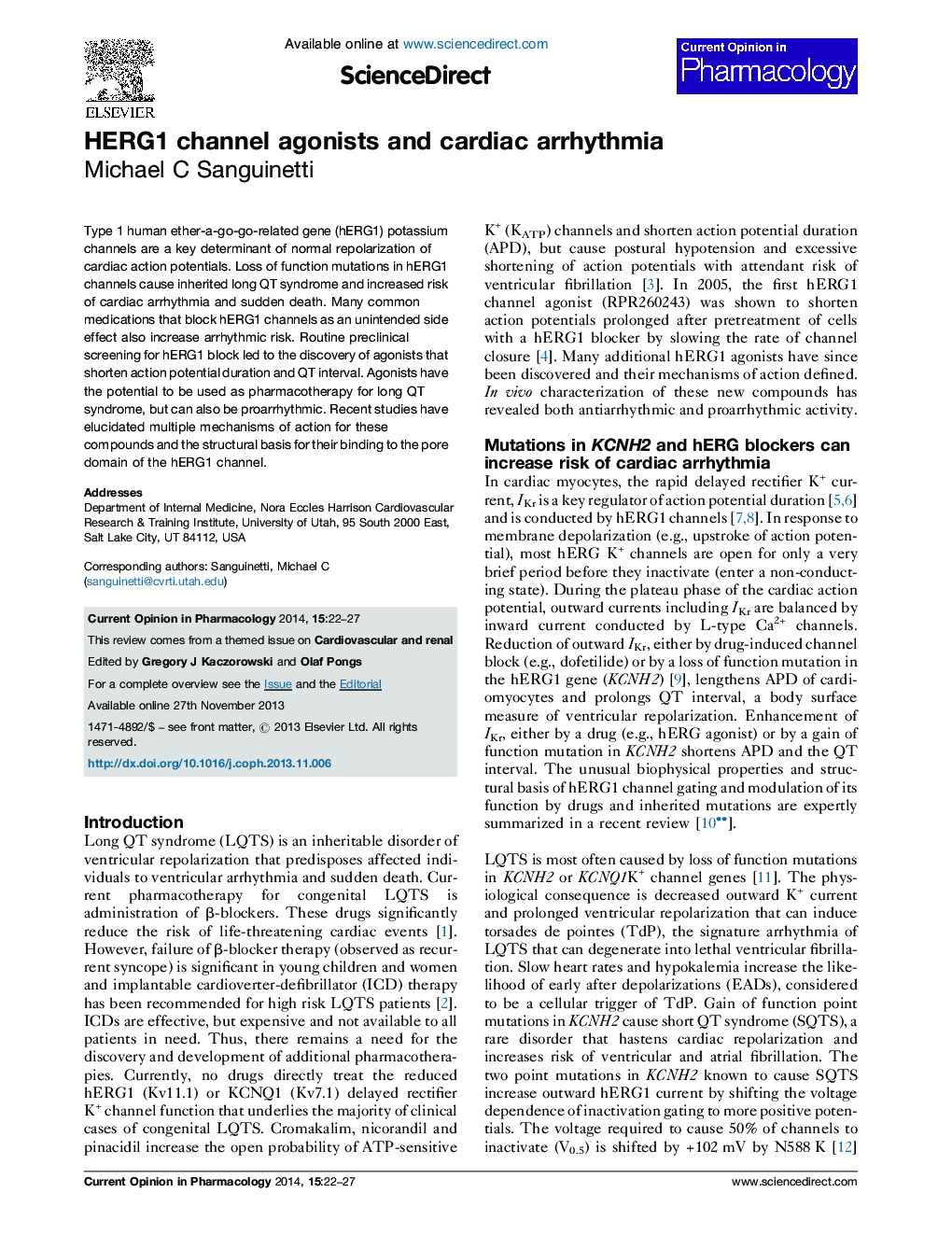| Article ID | Journal | Published Year | Pages | File Type |
|---|---|---|---|---|
| 2529859 | Current Opinion in Pharmacology | 2014 | 6 Pages |
•hERG1 potassium channels mediate repolarization of cardiac action potentials.•hERG1 agonists alter channel gating to shorten action potential duration and QT interval.•There are four identical agonist binding sites per hERG1 channel.•hERG1 agonists can either prevent or promote cardiac arrhythmia.
Type 1 human ether-a-go-go-related gene (hERG1) potassium channels are a key determinant of normal repolarization of cardiac action potentials. Loss of function mutations in hERG1 channels cause inherited long QT syndrome and increased risk of cardiac arrhythmia and sudden death. Many common medications that block hERG1 channels as an unintended side effect also increase arrhythmic risk. Routine preclinical screening for hERG1 block led to the discovery of agonists that shorten action potential duration and QT interval. Agonists have the potential to be used as pharmacotherapy for long QT syndrome, but can also be proarrhythmic. Recent studies have elucidated multiple mechanisms of action for these compounds and the structural basis for their binding to the pore domain of the hERG1 channel.
